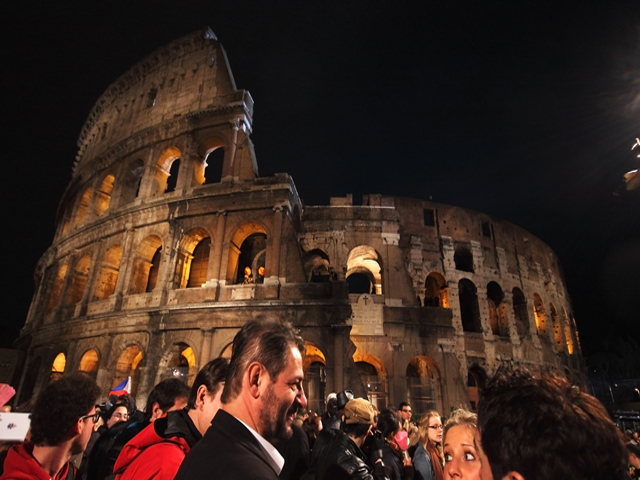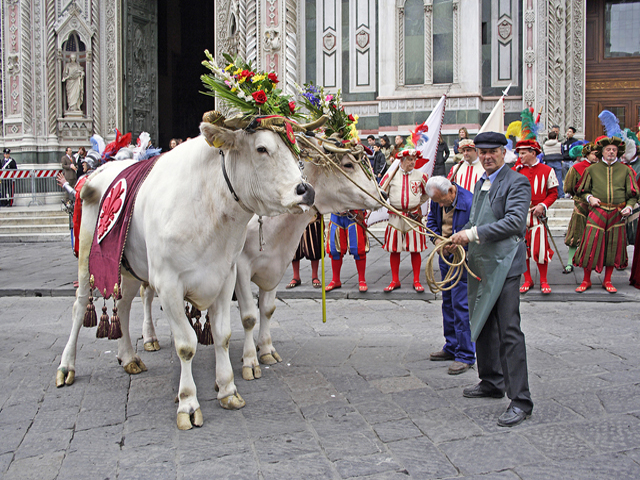
Any visitor in Italy during Holy Week would do well to know a bit about the rich traditions that surround this occasion. With Roman Catholicism being considered as the largest religion in the country in which the Vatican can also be found, a number of Holy Week traditions in Italy, from practices to rituals still prevail, particularly in the southern regions.
The beginning of Holy Week is on Palm Sunday, and it lasts for the rest of the week up until Black Saturday, before ending in joyous Easter, or “Pasqua”, celebrations. Take note that the Monday right after Easter (“Pasquetta”) is also a holiday, so plan your trips accordingly.
On Palm Sunday, the faithful normally flock to the churches where a mass and possibly processions are held. There are also baskets of olive branches and palms which are then blessed by the priest and are handed out to the congregation. These branches are then normally placed at the entrance of homes until the next year’s Palm Sunday when it is then replaced.
The rest of the Holy Week also traditionally involve a number of masses and processions, but especially so in Castelsardo in Sardinia. In this town, they perform a ritual known as the “Lunissanti” which begins at dawn and last until night on Holy Monday. The ritual has members of the Brotherhood of the Holy Cross wearing white hooded tunics, carrying religious symbols, and singing medieval songs in the medieval faburden style, as they complete their procession in the town’s streets.
These processions continue up until Maundy Thursday when the Last Supper is commemorated. At this point, all church and altar bells are silenced, not to be heard from again until Easter. Some churches also perform a reenactment of the “Washing of the Feet”, when Jesus is said to have washed the feet of his apostles.
Next comes Good Friday, which is a major Catholic holiday. A good number of people undergo fasting on this day, refraining from eating red meats, and it can be a rather solemn period. Many churches will cover their statues and crucifixes in black or purple cloth to signify that they are in mourning over the death of Christ. Being a major holiday, though, you can also expect processions and other rituals, with the biggest event of the day being the “Via Crucis” or “Way of the Cross”. This is particularly special in Rome, where the Pope himself will preside over a procession from the Colosseum to Palatine Hill. Other towns and cities may also hold different processions, as well as Passion Plays which re-enact the Passion of Christ, and other gospel stories.
Come Black Saturday, or Holy Saturday, it is normally marked as a day of silence and prayer, as well as continued fasting for devotees, when people wait for sundown in order to begin the Easter Vigil. This vigil is normally used as a time to prepare for Easter the next day, and at midnight, the previously-silenced bells are made to ring to indicate Christ’s return from death.
Now, Easter Sunday is when the biggest and most colorful events happen, as people celebrate the resurrection of Christ. It is a joyous occasion, usually started off by attending mass, before moving on to generous feasting with friends and family. On this day, it is common to find grilled lamb on the table, as well as a variety of sweets and cakes in the shape of lambs and doves, such as the colomba di pasqua. There are also cookies in the shape of doves called aceddu cu’ l’ova which are normally given away to friends and family as a token of good luck and a gesture of affection.
And let’s not forget the Easter eggs! They can be either hollow chocolate eggs with small toys inside, or hardboiled eggs which have been painted in vibrant, lively colors and patterns. Eggs will also feature prominently in the dishes serves, whether it be as an ingredient in soups or in various kinds of breads.
Other than the food, however, there are also some unique ways that Easter is celebrated in Italy, in places such as Florence or Cagliari. In Florence, for example, they have the ritual that is known as Scoppio del Carro, or the “explosion of the cart”. It is a procession that begins on Easter morning when a large antique wagon being pulled by a team of white oxen and followed by an entire congregation of people in 15th century attire perform a procession through the city center, before finally stopping in front of the Santa Maria del Fiore cathedral. At that point, a fuse leading to the cart is lit, which then sets off a fantastic fireworks display as the crowds cheer.

In Cagliari, as well as a number of other towns and provinces, the Vasa Vasa is still performed. It is a ritual wherein a statue of the risen Christ and a statue of the Virgin Mary are taken out of a church at the same time, but then follow opposite procession routes. At this time, the Virgin Mary is dressed in black to signify her mourning. Later on, the two processions end at the town square, with the two statues now facing each other at a distance. The black garb is then removed from the Virgin Mary, revealing the magnificent blue clothing underneath, as a sign of her joy at the return of Christ. The two statues are then moved closer to each other, and with the help of skilled manipulators or other mechanisms, it is made to look as if the Madonna is leaning over to kiss Christ in greeting amongst cheers from the crowd and a fireworks display.
We’re not done yet, though, because the following day, Easter Monday, is another holiday, and locals normally use this day to just relax, take a short break in the countryside or at the beach, and go on picnics (with Easter’s leftovers being packed in the basket). It is a tradition that celebrates the coming of spring, and is also a good breather before heading back to the usual grind the next day.
These are just some of the many Holy Week traditions that can be found all over Italy, and it might be best to keep in mind that nearly each province, city, or town also has its own twist to these celebrations. This means that depending on where you’ll be on a particular day of the Holy Week, you might get to experience a different flavor of these rituals and practices… which makes this season all the more exciting and colorful!
About the Author
Priscila Siano is the Marketing Director of Tour Italy Now, an online tour operator specializing in Italy travel. She’s a respected expert on making dream Italy vacations a reality for clients. For more on Priscila and her work, connect with her on Google+.











